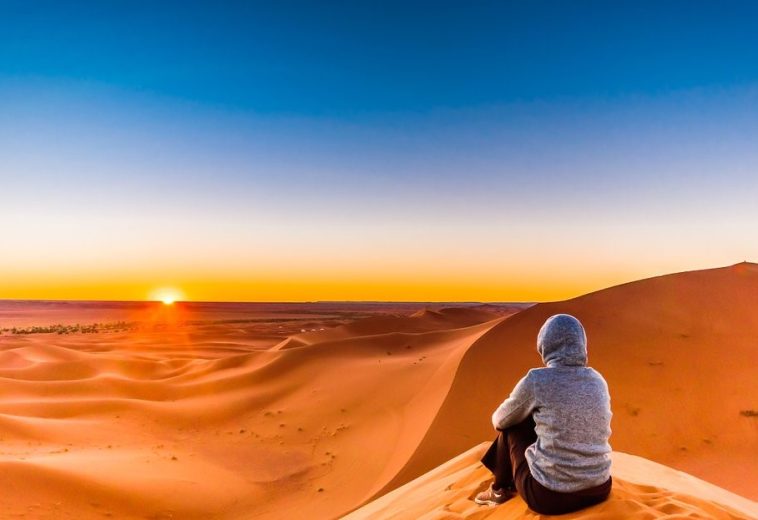Have you ever wondered what the most potent currency in Africa will be in 2023? In the modern world, the United Nations legally recognises approximately 180 coins. Some legal tenders are worth more than others. The United States Dollar, abbreviated as USD, is commonly used to compare the value of different currencies worldwide. Africa, on the other hand, is a vast continent with a colourful history. From the rich mineral resources such as rubber, oil, gold, cocoa, hides, and so on to the recent tech boom and eCommerce growth. The continent has undoubtedly made significant contributions to the global economy. It’s also a good option for international investors who want to spread their wings worldwide.
As a result, as is widely known, the African continent is home to 54 African countries and their respective currencies. Few of which are ranked among the world’s top 100 currencies. But which African currencies are the most powerful? Fortunately, we will discuss that in this post, as well as the rankings of all African currencies in the top 20 as of 2023. Note: As stated at the outset of this article, we will compare the most potent African currencies to the United States Dollar (USD), the global reserve currency. Furthermore, the exchange rates of these currencies fluctuate from time to time. This is because they are influenced by inflation, export and import duties, exchange rates, etc.
• The Tunisian dinar (TND) will be Africa’s most valuable currency in 2023. 1 USD is worth approximately 3.15 TND. Tunisia is located on Northern Africa’s Mediterranean coast, and the TND replaced the French franc in 1960.
• In 1971, the Libyan dinar (LYD) was introduced. Previously, the country used Libyan pounds. Libya used the French-Ottoman piastre during colonisation. At the moment, 1 USD equals 4.85 LYD.
• The Moroccan dirham (MAD) is the country’s currency, and bank al-Maghrib issues it. One dirham is subdivided into 100 centimes. Bank notes come in denominations of $20, $50, $100, and $200. 1 USD is worth approximately 10.44 MAD.
• The Ghanaian cedi (GHC) is the country’s official legal tender. Cedi, a cowry shell in Akan, was introduced on July 1, 2007. 1 USD is worth approximately 12.22 GHC.
• Seychelles is ranked fifth among African countries with the most valuable currencies. This legal tender first circulated in the country in 1914. The Seychelles Central Bank issues rupees. 1 USD is worth approximately 13.05 SCR.
• The Botswana pula (BWP) is one of Africa’s top 20 currencies. Pula is a blessing, or rain. The country is snowballing, and its currency is gaining value. 1 USD is worth approximately 13.36 BWP.
• Eritrea’s currency is one of the most powerful in Africa. 1 USD is worth approximately 15.00 ERN. The nakfa, the country’s official legal tender, was introduced in 1997.
• Namibia adopted the South African rand (ZAR) as its official legal tender in 1990. This changed in 1993 with the introduction of the Namibian dollar (NAD).
• 1 USD is worth approximately 18.46 NAD. The South African Rand is the continent’s ninth-most valuable legal tender. The term was derived from Witwatersrand, which means “white waters ridge.” In February 1961, the rand was introduced in the country. 1 USD is worth approximately 18.48 ZAR.
• The Eswatini lilangeni (SZL) is the official currency of the Kingdom of Eswatini, formerly Swaziland. The Central Bank of Eswatini issues the money in circulation. The South African rand is pegged to the SZL, which was introduced in 1974.
• . The Lesotho loti is the official legal tender of the Kingdom of Lesotho, and it can be subdivided into units of 100 called lisente. Because the loti is pegged to the rand, the South African rand is also widely used in this African kingdom. 1 USD is worth approximately 18.53 lotis.
• The Zambian kwacha (ZMK) is the country’s official tender issued by the Central Bank of Zambia. Kwacha is a Nyanja word that means “dawn.” The Zambian pound was replaced by the kwacha in 1967. 1 USD is worth approximately 20.13 kwacha.
• The So Tomé and Prncipe dobra (STD) is the official currency of So Tomé and Prncipe. Between 1470 and 1975, the Portuguese colonised the island. During this time, escudos were in use. Following independence, the country began to use dobras. 1 USD is worth approximately 23.35 dobras.
• In 1834, the Egyptian piastre was replaced by the EGP. Today, 1 USD is worth approximately 30.90 EGP. The Egyptian pound is denoted by the symbol E£.
• The Mauritanian Ouguiya (MRO) is the African Republic of Mauritania’s official legal tender. The ouguiya is one of the world’s most unique legal tenders because it is divided into five khoums. The currency is not divisible by units of ten or hundreds.
• The Mauritian rupee (MUR) was established as a currency in Mauritius in 1876 and began circulating in 1877. It comes in 25, 50, 100, 200, 500, 1000, and 2000 denominations. Because of the influx of Indian rupees into the country due to immigration, the government decided to use rupees as the official legal tender. Today, 1 USD is worth approximately 46.76 MUR.
• The Ethiopian birr (ETB) is the official legal tender of the Federal Democratic Republic of Ethiopia and is issued by the National Bank of Ethiopia. The bank uses the dirty float system to manage the value of the birr. Today, one US dollar is worth approximately 53.70 birr.
• The Gambian dalasi (GMD) is one of the most valuable African currencies. It is the official currency of the Gambia. The word dalasi was derived from the dala, a 5-franc coin introduced by Frenchmen into the country. The Gambian dollar was replaced by the dalasi in 1971. 1 USD is worth approximately 61.15 GMD.
• The Mozambique metical (MZM) is the Republic of Mozambique’s national legal tender. The term medical comes from the Arabic word mithqal. During the colonial era, the Mozambican escudo was used. It was later changed to the old medical MZM, which was replaced in 2012 by the new MZN. 1 USD is currently worth approximately 63.84 MZN.
• The Cape Verde escudo (CVE) is the island nation of Cabo Verde’s official legal tender. The Banco de Cabo Verde issues this currency in 200, 500, 1,000, 2,000, and 5,000 denominations. The CVE replaced the previous national currency, the Cape Verde authentic, introduced by the Portuguese. 1 USD is currently worth approximately 104.08 CVE.
What other African countries can do to make their currencies stronger
There are few, and challenging, options. In the short term, African countries have two main options. Unfortunately, neither is a panacea.
The first is to keep raising interest rates to counteract currency depreciation pressures caused by the strong dollar. However, if interest rates continue to rise, output will be squeezed, and some African economies may experience a recession.
To avoid an economic downturn, interest rates must be raised with caution.
The second option is to intervene in the currency market to reduce currency depreciation pressures.
This necessitates the use of foreign exchange reserves to support the currency. This alternative is not widely available. Many African countries have depleted their surplus resources due to extensive public spending programmes during the COVID pandemic and higher commodity import payments. As a result, several countries’ foreign currency reserves are already dangerously low. According to the International Monetary Fund, one-quarter of Sub-Saharan African countries have budgets that are less than three months’ worth of imports, and more than three-quarters have budgets that are less than five months. Given that weaker currencies increase the purchasing power of foreign visitors, one option would be to increase tourism to help support local currencies in the medium term.


